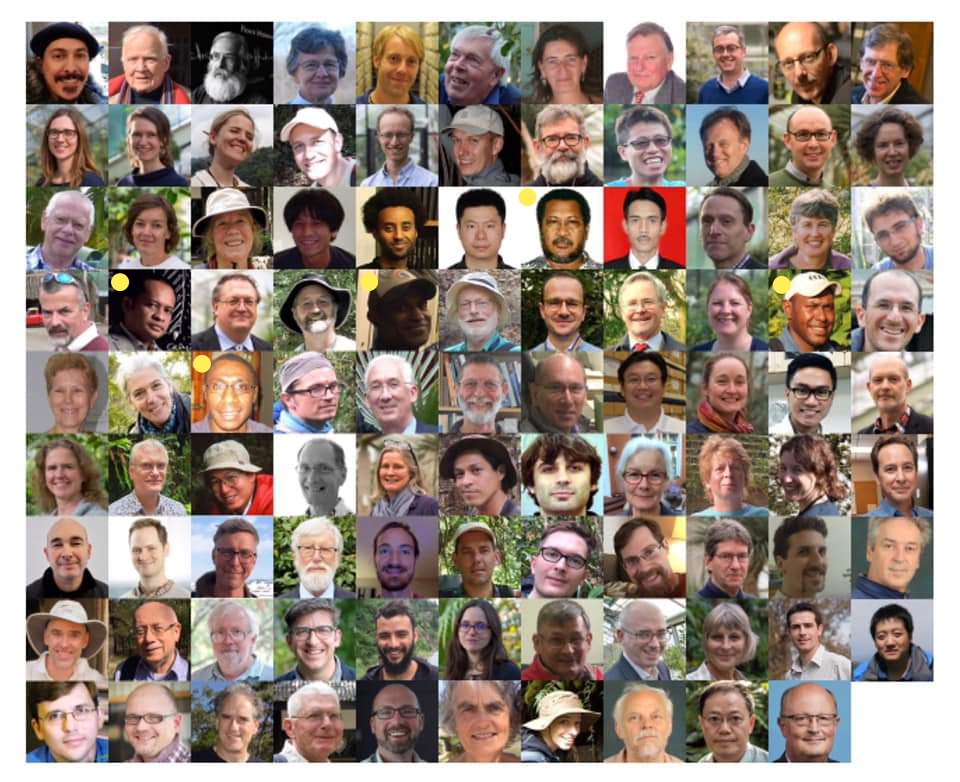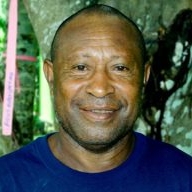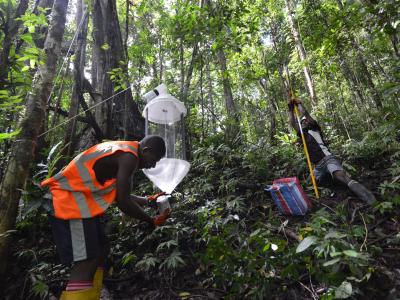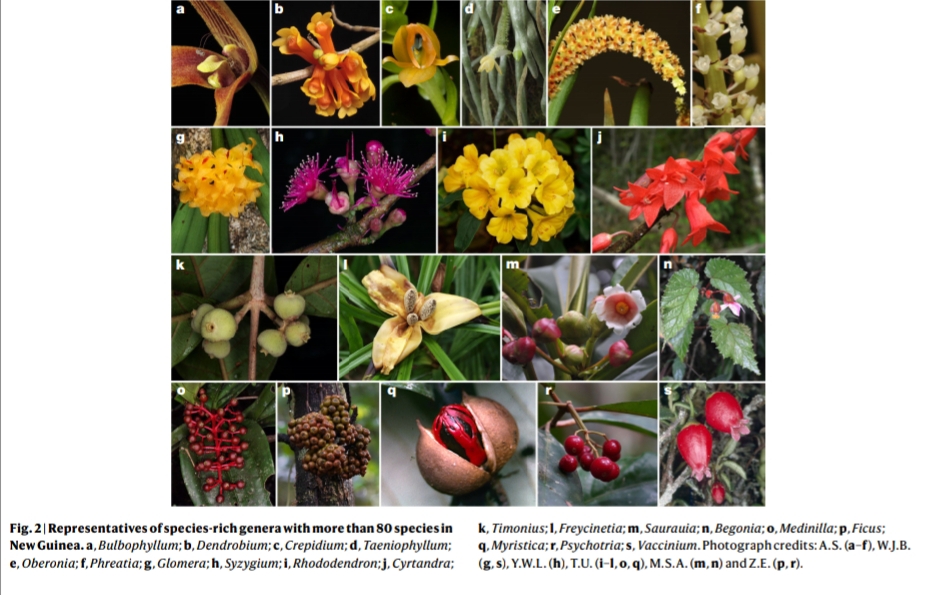
On the day I turned another year older (5th August 2020) the scientific community also gave me another, and bigger reason, to celebrate that day.
For the first time from its initial settlement by our ancestors some 50 000 years ago, and since scientific explorations began on the island of New Guinea by early Europeans about 3 centuries past, botanical experts have finally come up with a list of all known plant species for the world’s largest tropical island.
An exciting spoiler alert is that this list is far from complete.
The study, published in one of the world’s most prestigious scientific journals, Nature, involved 99 botanical experts from 65 institutions in 19 countries and puts New Guinea’s current vascular plant species at 13 634, making it the most biodiverse tropical island for plants.

With a high proportion of these plant species (68%) being endemic and found nowhere else, this species list also is by no means complete, and extrapolations show no slowing down in the number of new species yet to be discovered.

The New Guinea Team
Involved in this international team of botanists are Professor Osiah Gideon from the PNG University of Technology’s Forestry Department, as well as Mr. Tiberius Jimbo, Mr. Penniel Lamei, and Mr. Peter Homot representing the hardworking botanists at the PNG Forest Research Institute (PNGFRI).
I am fortunate to know the 3 botanists from PNGFRI personally, having witnessed their amazing skills at plant identification and field forestry, and am proud of their scientific achievement as well as the promise of their leadership in PNG’s future botanical studies.
Within this long list of authors is another which I happily recognised and also wish to appreciate- Professor Charlie D Heatubun from the Forest Botany Department of Universitas Papua in Indonesian Papua, and a Research Associate at the Kew Royal Botanical Gardens Herbarium in the UK.
I had met Prof. Heatubun, a botanical expert in tropical palms, at the Kew Gardens during a visit there in 2013 and was amazed by his work in documenting and describing numerous new species of palms from New Guinea and Indonesia and have followed his work ever since.

Key messages from the study
Apart from providing this valuable species list, the study highlights the important need for the countries of PNG and Indonesia to safeguard their unique biodiversity against increasing forest degradation pressures, highly recommending the setup of conservation areas to encompass both low and high altitude areas, importantly since plant endemicity is found to increase with altitude.

With this currently published list as baseline data, and the urgent need to continue documenting New Guinea’s plant diversity, the study’s authors also suggest a 6-step approach to this vital task:
1. Training of more plant taxonomists from New Guinea (there is currently heavy reliance on overseas experts)
2. International-scale efforts to digitize and unify historical collections (eg; just 50% of PNG National Herbarium collections are digitized)
3. More taxonomic research on plants
4. Increasing the number and quality of user-friendly plant field guides
5. More international collaboration on plant studies
6. Plant collecting efforts to be increased (an estimated 4000 species might be added to the list in 50 years at current efforts)
Commentary by Leading Ecologists in PNG
Professor Vojtech Novotny and Mr Kenneth Molem, ecological researchers at the New Guinea Binatang Research Centre, in their commentary article on this vital study describe the plant list for New Guinea as “an excellent start on a long journey towards obtaining a full inventory of New Guinean biodiversity — a necessary tool for ensuring plant conservation and sustainable use”, and emphasize the need for New Guineans, as the custodians of this irreplaceable biodiversity, to be at the forefront of this important endeavor.
In a personal insight by one of the PNG co-authors of the study, Mr. Tiberius Jimbo attested to the influential importance of Prof. Novotny in making sure that young PNG botanists were also included in this historic study for New Guinea.
Mr. Jimbo noted that Prof. Novotny was one of the 5 reviewers for the submitted journal article for publication and was adamant that PNG botanists who had contributed to the study be included as co-authors.
“Big thanks to Vojtech for getting us going in this publication”, Mr. Jimbo said, refering to Prof. Novotny as a great and rare mentor for young PNG researchers.

Another major contributing co-author to the study is Professor George D Weiblen, a distinguished botanist at the University of Minnesota with decades of research, training and conservation work in PNG as the lead expatriate botanical researcher with the Binatang Research Centre.
My non-expert take on it all
This historic paper was first published on my birthday, and is perhaps a nostalgic coincidence for me personally as I had turned 21 years old in 2009 while working in the Ramu lowland jungles with former colleagues from the New Guinea Binatang Research Centre in Madang to establish the now-complete Wanang 50 Hectare Forest Dynamics Permanent Plot– a unique scientific resource for PNG that has no doubt contributed to this breakthrough study and will continue to do so for New Guinea botanical studies for many more years to come.

I am privileged to have been part of the lead team in finalising the protocols for PNG’s first Nationwide Forest Inventory, in collaboration with the PNG Forest Authority, PNG Forest Research Institute and FAO. This nationwide survey aims to document and gather data for PNG’s forest resources on an unprecedented-scale, and will certainly be of significant importance in adding further species to the list now published.
I am privileged to have been part of the New Guinea Binatang Centre and contributed to its work in establishing and maintaining PNG’s Complete Altitudinal Gradient Transect that begins in the Madang lowlands and continues to the Mt. Wilhelm Nature Park- a crucial conservation objective that this current study strongly recommends.
I am fortunate to know amazing people like Kenneth Molem, a walking encyclopedia of botanical information with only a primary school education but fueled by extensive traditional knowledge of plants from his local Amele area in Madang and an uncanny ability to remember plants and their tongue-twisting Latin names.

There are many others like Kenneth that I am privileged to be acquainted with, many of whom he himself had trained, although none seem to surpass his botanical prowess as yet.
I also am privileged to have witnessed a community like the Wanang Conservation Area people, transform before my eyes from a mostly illiterate and disempowered, logging-encroached rural community to a group now heavily involved in supporting biodiversity conservation research on a global level, through the seamless exchange of information, ideas and knowledge between overseas and PNG experts and the local villagers.

I have sometimes had this warm smile of realisation when working in the Wanang forests alongside the locals there, thinking to myself that these people must be the only or very few tribes in PNG who can comfortably use scientific names for plants, animals and ecological terms within their own local language on a daily basis, perhaps without themselves fully realising how unique and privileged they are in this regard.
And so through these experiences, for the training of more New Guineans in plant taxonomy as this important study prominently highlights, I doubt that there will be a lack in aptitude or of willing pupils- only of support and opportunities.
Download the full pdf of the study below

Great review. Putting faces to names and showcasing our experts. Share link to the Current Research Papers FB page. Cheers.
LikeLiked by 1 person
Thank you Tanya. Sorry, just seen your message. Will share to the page. Cheers
LikeLike
Great article Bradley. I remember back in our high school days how you knew so much about human anatomy. Great to see you working in one of the best institutions in PNG when it comes to botanics.
The piece about Wanag people was funny in a way, the only group in PNG who know the scientific names for plants and they probably don’t realize how elite of a group they are.
Looking forward to reading more about the great work you guys are doing.
LikeLiked by 1 person
Thank you Michael. Appreciate your words and looking forward to reading more of your works too. Cheers
LikeLiked by 1 person